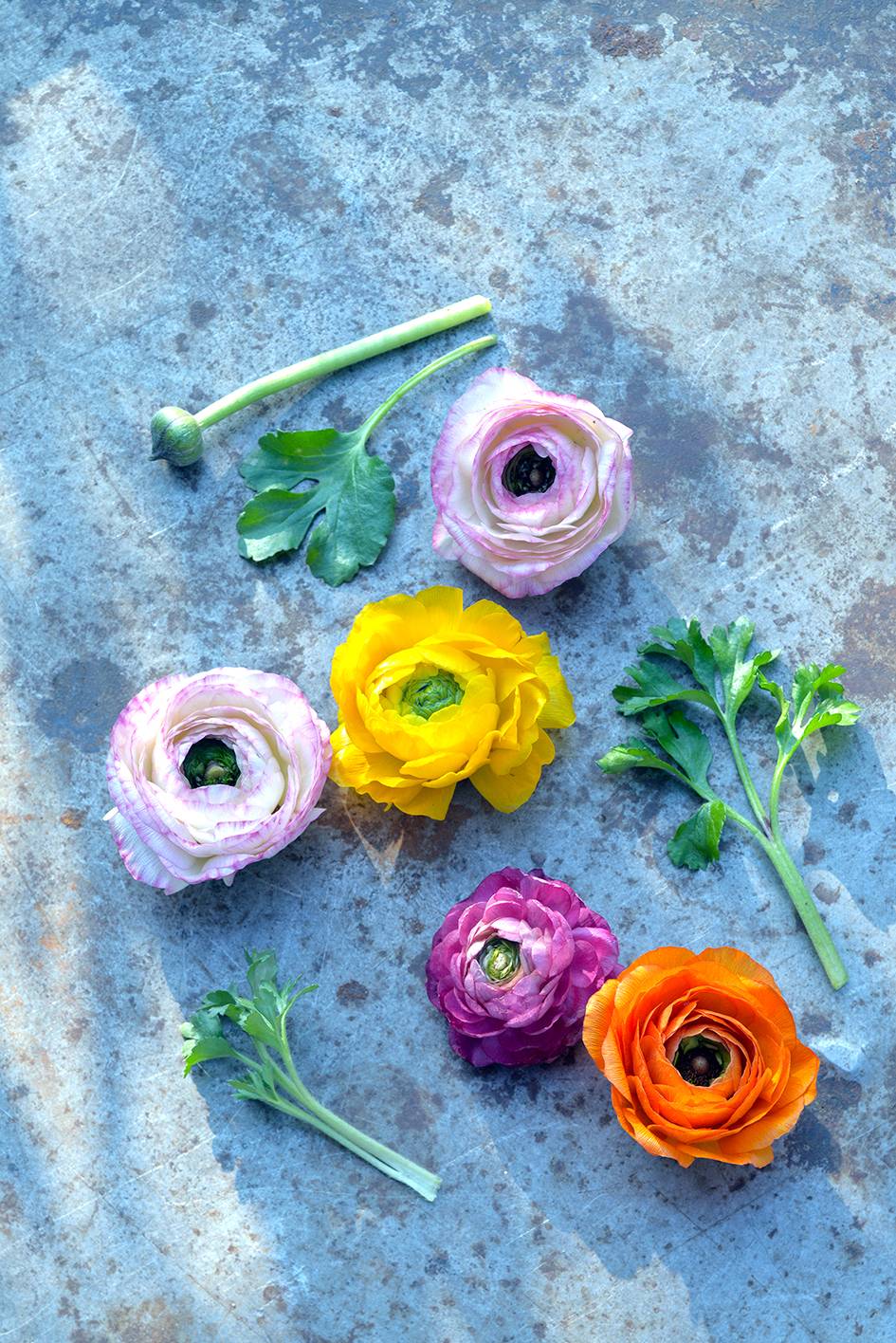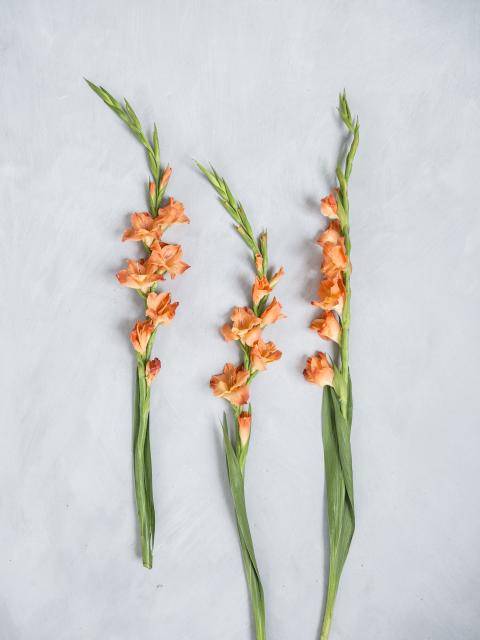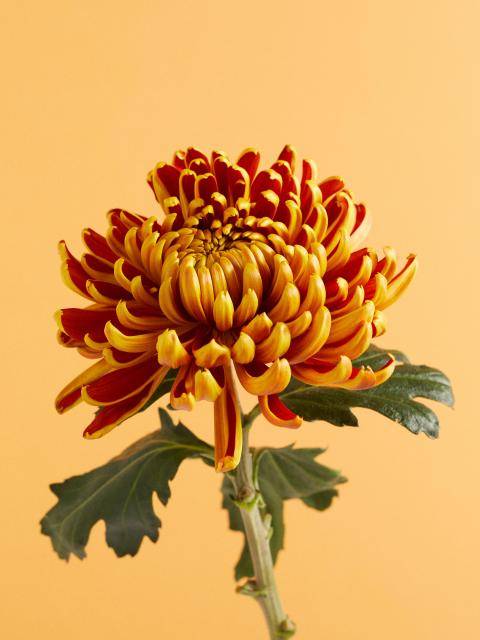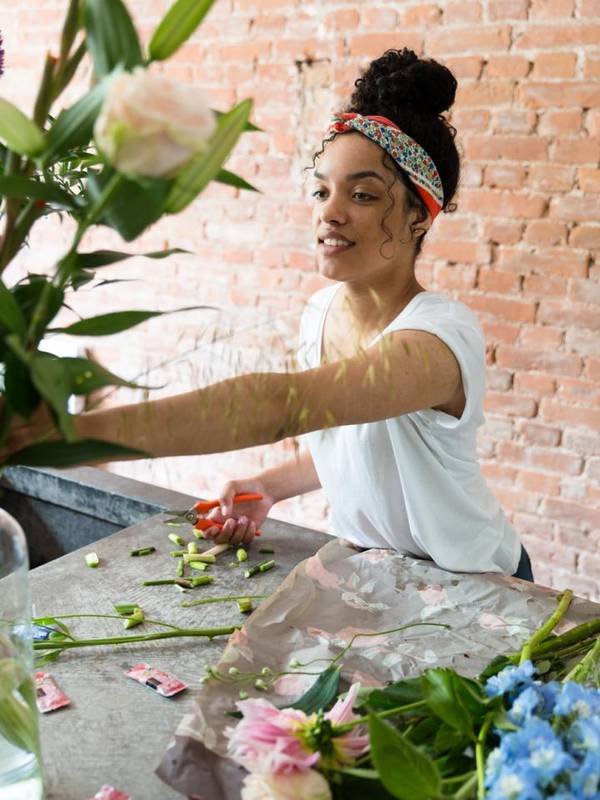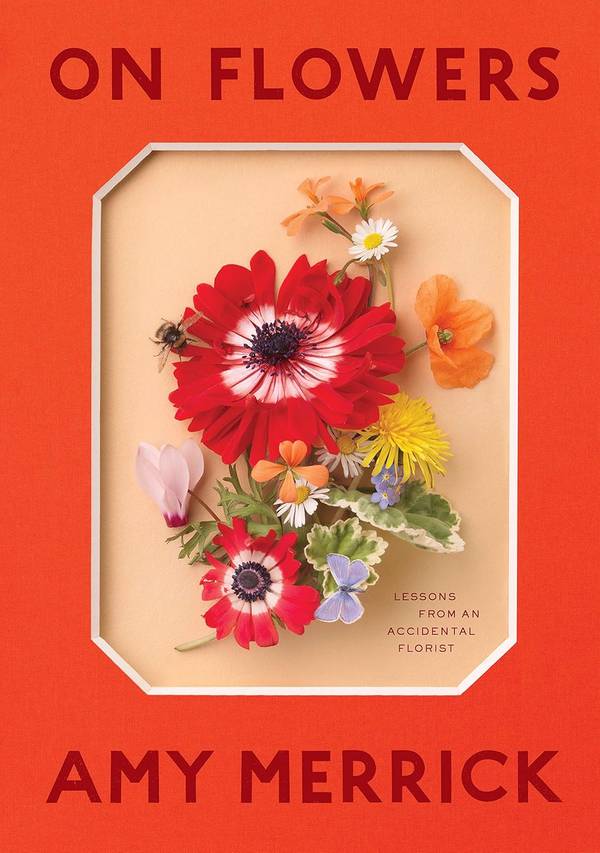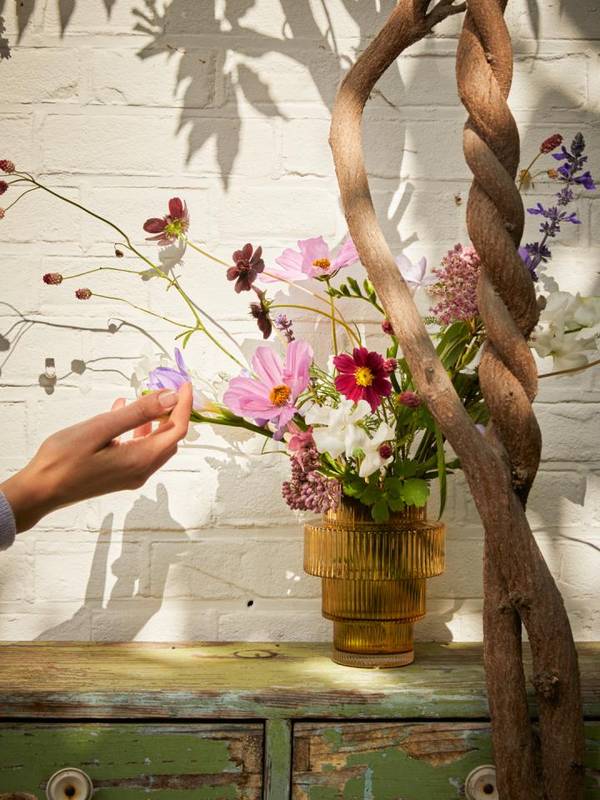
Caring for ranuculus
To give your flowers a longer life:
- Cut the bottom of the stems diagonally
- Place the flowers in a clean vase with clean water and cut flower food
- Avoid leaving the flowers to sit in lots of water, as the stems don't like it
- Regularly top up the vase as the flowers drink a lot
- Place the vase in a cool spot, avoiding direct sunlight or draughts
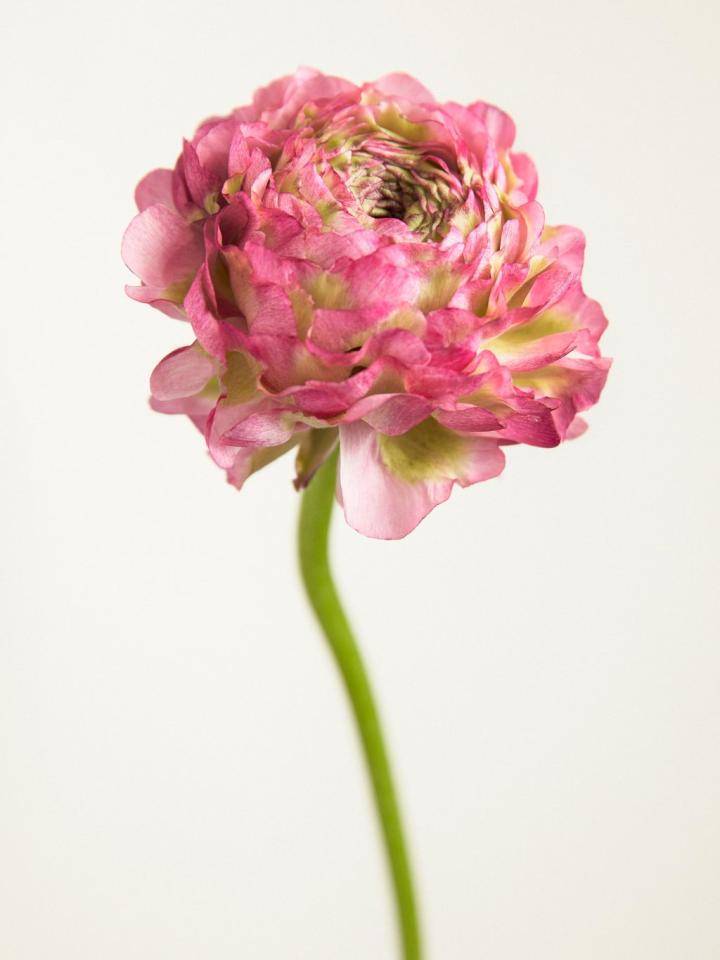
Colours and shapes
Ranunculus is available in white, yellow, orange, pink, red and purple varieties. Its petals open one by one, slowly revealing its dark-coloured heart.
Symbolism
The ranunculus symbolises charm. In Victorian times, the gift of a bunch of ranunculus meant the giver found the receiver very charming indeed! The flower is still extremely popular today, and a gift of a dozen stems is bound to bring a smile to someone's face.
Origin
The ranunculus comes all the way from central Asia. When the flower arrived in Europe, it was given the strange-sounding name Ranunculus. This is in fact derived from the Latin word for frog — which isn't as weird as it seems. In the wild, the ranunculus grows in swampy, marshy areas.
